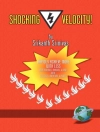Conducting Research in Psychology: Measuring the Weight of Smoke provides students an engaging introduction to psychological research by employing humor, stories, and hands-on activities. Through its methodology exercises, learners are encouraged to use their intuition to understand research methods and apply basic research principles to novel problems. Authors Brett W. Pelham and Hart Blanton integrate cutting-edge topics, including implicit biases, measurement controversies, online data collection, and new tools for determining the replicability of a set of research findings. The Fifth Edition broadens its coverage of methodologies to reflect the types of research now conducted by psychologists. Two new chapters accommodate the needs of instructors who incorporate student research projects into their courses.
Inhoudsopgave
Preface
About the Authors
CHAPTER 1. How Do We Know?
Introduction: What This Text Is About
A Few Quick Tips for Using This Text
Preamble for Chapter 1
A Brief History of Human Knowledge
The Four Canons of Science
Four Ways of Knowing About the World
Summary
Study Questions
Notes
CHAPTER 2. How Do We Find Out? The Logic, Art, and Ethics of Scientific Discovery
The Logic of Scientific Discovery
The Art of Scientific Discovery
The Ethics of Scientific Discovery
Summary
Study Questions
Notes
CHAPTER 3. In a Nutshell: An Overview of Psychological Research Methods
A Tale of Two Validities
Three Requirements for Establishing Causality
Experiments: Fulfilling Mill’s Requirements
Passive Observational (Nonexperimental) Research Methods
Trade-Offs Between Internal and External Validity
GAGES: The “Big Five” of Worrisome Confounds
External Validity and the OOPS! Heuristic
Oops! He Did It Again: Maximizing External Validity in the Lab
Gauging GAGES in Archival Studies of Social Cognition
Summary
Study Questions
CHAPTER 4. Making It Happen: A Hands-On Guide to a First Research Project
Everybody Dance Now
Step 1: Hypothesis Generation
Step 2: Operationalization (Design)
Step 3: Permission
Step 4: Execution (Data Collection)
Step 5: Calculation (Data Analysis)
Step 6: Communication
Summary
Study Questions
Notes
CHAPTER 5. Moving From Fact to Truth: Validity, Reliability, and Measurement
Three Strange Stories
Validity
Reliability
Reliability, Validity, and the “More Is Better” Rule
Measurement Scales
Summary
Study Questions
CHAPTER 6. Moving From Notions to Numbers: Psychological Measurement
Converting Notions to Numbers: The Two Major Challenges
The Response Translation Phase
Putting It All Together: The EGWA Scale
From Writing Questions to Creating Scales
Summary
Study Questions
CHAPTER 7. How Do We Misinterpret? Common Threats to Validity
One Strange and Lucrative Story
People Are Different
People Change
The Process of Studying People Changes People
Moving From Three Threats to Two: Confounds and Artifacts
Summary
Study Questions
Note
CHAPTER 8. Nonexperimental Research Designs
Describing the World of a Single Participant: Case Studies
Describing the State of the World at Large: Single-Variable Research
Describing Associations: Multiple-Variable Research
Archival Research
Observational Research
Confounds Can Be Measured, Too!
Summary
Study Questions
Notes
CHAPTER 9. Experience Carefully Planned: Experimental Research Designs
A Wonderful Method
A Brief History of True Experiments
Strengths of True Experiments
Are True Experiments Realistic?
Is There a Recipe for Experimental Realism?
Trade-Offs Between Internal and External Validity
The “How-Tos” of Laboratory Studies
Summary
Study Questions
Notes
CHAPTER 10. Experience Carefully Exploited: Quasi-Experimental Research Designs
One Very Old Story
Why Quasi-Experiments?
Kinds of Quasi-Experiments
Comparability
Patched-Up Designs
When True Experiments and Quasi-Experiments Collide
Summary
Study Questions
Notes
CHAPTER 11. Choosing the Right Research Design
One Obscure Movie
One-Way Designs
Factorial Designs
Within-Subjects Designs
Mixed-Model Designs
Summary
Study Questions
Notes
CHAPTER 12. A Brief Course in Statistics
How Numbers and Language Revolutionized Human History
Descriptive Statistics
Inferential Statistics
Things That Go Bump in the Light: Factors That Influence the Results of Significance Tests
The Changing State of the Art: Alternate Perspectives on Statistical Hypothesis Testing
Summary
Study Questions
Notes
CHAPTER 13. Telling the World About It
The Hourglass Approach to Empirical Research Papers
Some Rules to Writing Research Papers
How to Give a Good Talk in Psychology (by Daniel T. Gilbert)
Have a Plan
Tell the Plan
Start at the Beginning
Be Painfully Clear
Talk About One Interesting Thing
Take Charge of the Interaction
End at the End
Summary
Study Questions
Appendix 1: Hands-On Activities
Hands-On Activity 1: Galileo’s Dice
Hands-On Activity 2: Regression Toward the Mean
Hands-On Activity 3: A Double-Blind Taste Test With Popular Colas
Hands-On Activity 4: The Stroop Interference Effect
Appendix 2: Methodology Exercises
Methodology Exercise 1: Partial Correlation
Methodology Exercise 2: Random Assignment
Methodology Exercise 3: Interactions
Methodology Exercise 4: Repeated Measures Designs
Questions
Appendix 3: Putting Your Knowledge to Work: 25 Methodology Problems
1. In Search of a Delicious, Low-Fat TV Show
2. Let’s Get Supernatural
3. Fly Away Home
4. Impressive Pickup Lines
5. Clever Who?
6. Life Sucks and So You Die
7. On the Drawbacks of Liking Yourself
8. The Early Bird Gets the Win?
9. Testosterone Makes Better Dive-Bombers
10. Working Your Fingers to the Dean’s List
11. To Thine Own Selves Be True
12. A Rosy Mood by Any Other Name?
13. EPSCOR: Do Fractions Have Denominators?
14. Sampling Student Opinion
15. Are You the Favorite Person of Anybody?
16. He May Be Small but He’s Slow
17. Everyone’s a Winner
18. Can a Couple of Beers Really Go Straight to Your Belly?
19. What’s in a Name?
20. Are You Threatening Me?
21.Genes, Schmenes
22. Do Car Thieves Really Love Old Hondas?
23. An Unbiased Assessment?
24. Mary, Mary, Quite the Centenarian?
25. Register on Time (The 11:59 Initiative)
Appendix 4: An Example of an APA-Style Research Paper: Ethnicity and the Risk of Unwarranted Cesarean Birth in the United States
Glossary
References
Name Index
Subject Index
Over de auteur
Brett Pelham grew up as the second of six children near the small town of Rossville, Georgia. Brett received his B.S. from Berry College in 1983 and received his Ph.D. from the University of Texas at Austin in 1989. He began thinking about this book while teaching statistics at UCLA but got serious about doing so while teaching statistics at UB (in Buffalo, NY). After leaving UB, Brett worked for a year as a visiting professor in marketing at Georgetown University. He was then lucky enough to work for about two years as a senior research analyst at Gallup. This was followed by two not-so-lucky years as a Program Director at the National Science Foundation. At the time of this writing (in January 2012) Brett was extremely excited to have just taken a position promoting graduate and postgraduate education in the Education Directorate at the American Psychological Association. With apologies to Lenny Bruce, you can see that Brett has had some difficulties holding down a regular job recently. The bulk of his research focuses on automatic social judgment and self-evaluation. Over the past two decades, he has taught courses in social psychology, research methods, statistics, social cognition, and the self-concept. In his spare time, he enjoys juggling, sculpting, listening to alternative rock music, cooking, and traveling. His two favorite activities while completing this textbook (in late 2011) were spending time with his 3-year-old daughter Brooklyn and his 8-year-old son Lincoln. Along with his wife LJ Pelham, Brett is co-inventor of the recently released card game PRIME. Along with his son Lincoln, he is co-inventor of the soon-to-be-released card game Cliff-Hanger. Along with his daughter Brooklyn, he is co-inventor of the never-to-be-released card game It’s a Hat. You Like It? His most recent writing project is a novel tentatively entitled Elvis 2.0, which focuses on scientific and religious problems associated with the apparent resurrection of Elvis Presley.












